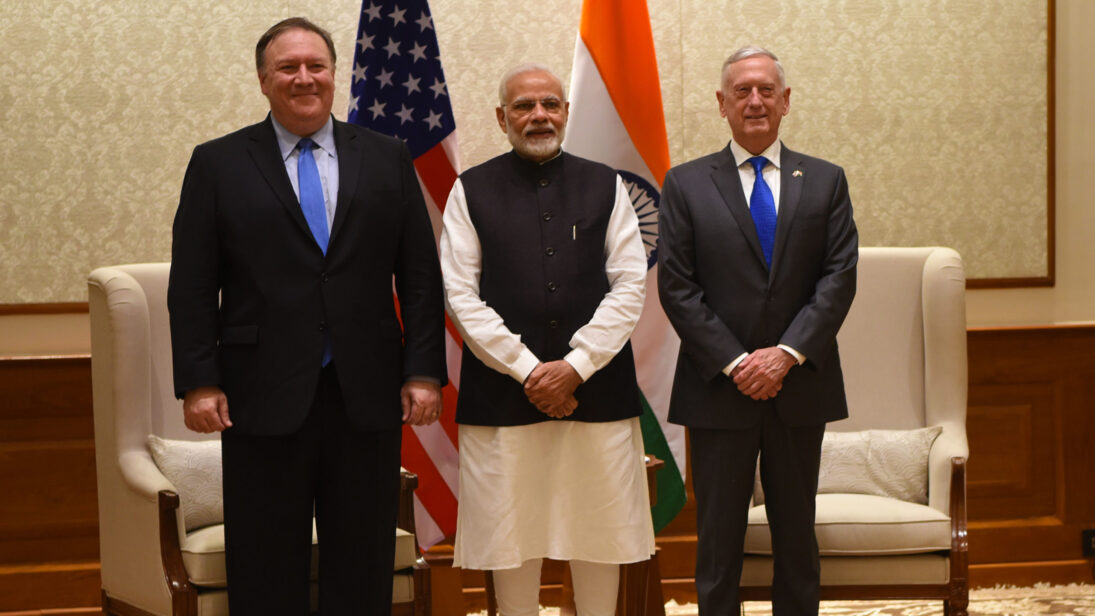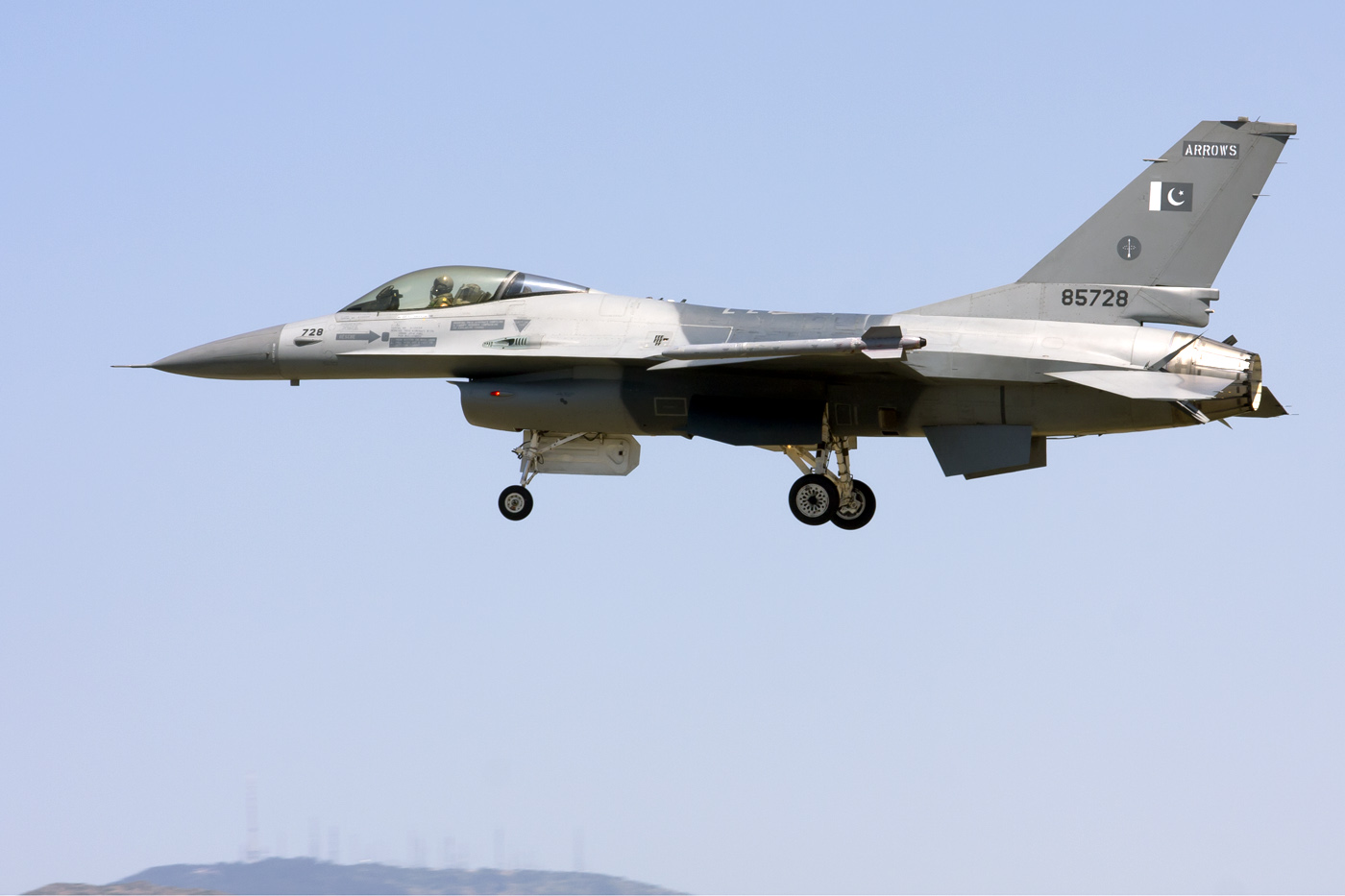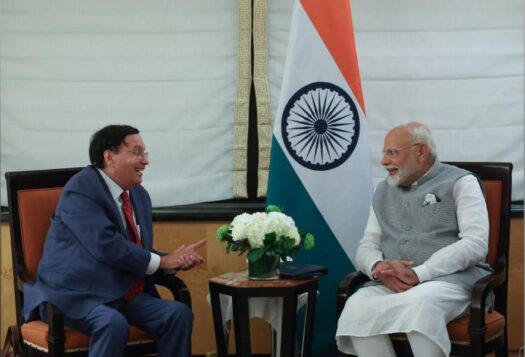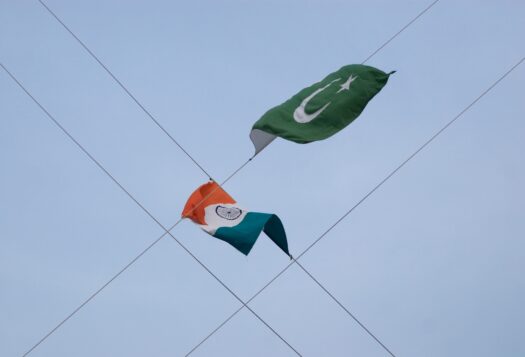
Introduction
India and Pakistan have witnessed multiple crises since their overt nuclearization in 1998. Although the two countries fought three major wars before their respective nuclear tests, the presence of nuclear weapons made post-1998 crises more dangerous and drew global attention to de-escalation.
After failing to stop nuclear weapons development by India and Pakistan, the United States became more concerned with ensuring that no nuclear exchange take place between the two rival countries.1 This objective inevitably drew the United States into the role of a crisis manager, a role which solidified when the first nuclearized South Asian crisis erupted at Kargil in 1999 and President Clinton’s direct involvement enabled India and Pakistan to step back from the brink.
Since the Kargil crisis, the United States has become the de-facto crisis manager in South Asia—possessing leverage over the primary parties, the necessary means and intelligence to anticipate the developing situation, and the political clout necessary to pressure both countries to de-escalate. The U.S. role as third-party mediator strengthened with each new crisis in later years. From Twin Peaks (2001-02) to Mumbai (2008) there was more active U.S. involvement in defusing the tensions between India and Pakistan that included top-level diplomacy and high-level official visits.2 However, after the 2008 Mumbai attack, there was growing frustration and a strong desire in India to establish itself in the region by taking action against Pakistan over the charges of cross-border terrorism. This growing impatience was illustrated in the “surgical strikes” following a terror attack in Uri in 2016. India’s assertiveness became more visible during the 2019 Pulwama/Balakot crisis, as India departed from its traditional restrained response targeted mainland Pakistan in the Balakot strikes. India’s forceful response after the terror attack in Pulwama was a major shift that also manifested a diminishing role of the United States as an effective third party in containing the crisis to lower levels.
This policy memo provides an overview of the changing trends and evolving role of third-party mediation in South Asia to assess what impact it may have on future crises. Shifting dynamics—including greater risk-taking actions by India and Pakistan in order to establish escalation dominance in a crisis and a United States less inclined to play a neutral third party role—could raise the risk of escalation in future crises. Considering lessons from the Pulwama/Balakot crisis, this memo will propose recommendations for policymakers in India, Pakistan, and the United States to assess evolving crisis dynamics and potential openings for third-party crisis managers to assist in future de-escalation.
Shifting dynamics—including greater risk-taking actions by India and Pakistan in order to establish escalation dominance in a crisis and a United States less inclined to play a neutral third party role—could raise the risk of escalation in future crises.
The Problem of Inconsistent Third-Party Mediation
The escalation during the Pulwama/Balakot crisis was unprecedented, as two nuclear-armed states moved up the escalation ladder to a point of a conventional aerial dogfight. Unlike previous crises, where U.S. involvement was more direct and visible in urging restraint, Washington’s reported acquiescence to India’s aggressive posture after the Pulwama attack indicated that that the role of the United States as a reliable and neutral third party was shifting. The deployment of India’s nuclear-capable submarine during the standoff and Prime Minister Modi’s later signaling of India’s threat to carry out a missile attack against Pakistan—and Pakistan’s threat to respond if such an act was taken—further exposed both the eroding effectiveness of the United States as a safety valve between the two nuclear rivals and the high risks of greater escalation during the Pulwama/Balakot crisis.
The developments of the past decade have challenged U.S. credibility as a neutral third party. Most significant has been the US tilt towards India that began with the Indo-U.S. nuclear deal under the Bush administration and solidified with President Obama’s pivot towards Asia and rebuilding of strategic ties with India. These developments have raised concerns for Pakistan over the U.S. role as a neutral crisis manager. In the aftermath of the Balakot airstrikes, Indian National Security Advisor Ajit Doval’s claim that the United States had recognized India’s right to self-defense following his phone call with U.S. Secretary of State Mike Pompeo suggested the U.S. had sided with India—thereby departing from its position as a “neutral” mediator.
As a result of this perceived lean towards India along with growing Indian assertiveness, the United States seems to have weakened its leverage with both India and Pakistan, as evident from the more aggressive posture by both the South Asian states. This has opened space for greater regional involvement in crisis management—as shown during the Pulwama/Balakot crisis. For example, there are indications China may have tried to fill in the gaps to control the escalating situation and played a more pronounced role during the crisis by urging restraint as a regional power. While China’s role in crisis management merits further research, the involvement of additional third parties has the potential to complicate the situation instead of resolving it as the United States departs from its traditional primary mediator role. Mainly because of the United States’ political clout to influence the involved parties’ behavior and the access to intelligence to deal with rapidly developing situations.
The Pulwama/Balakot episode also underscored the argument by some that outsourcing crisis management to a third party is inherently destabilizing as it is based on potentially misplaced trust that the third party will intervene before the crisis becomes out of control. This can also lead the competing states to feel more incentivized to engage in a policy of brinkmanship. In addition, a third party’s motivation to intervene in a crisis may be different at any given point in time, hence increasing the chance of miscalculation by the competing states that in turn would challenge the strategic stability in the region.
The Pulwama/Balakot episode also underscored the argument by some that outsourcing crisis management to a third party is inherently destabilizing as it is based on potentially misplaced trust that the third party will intervene before the crisis becomes out of control.
Evaluating the Pulwama/Balakot Crisis
The Pulwama/Balakot crisis not only followed a different path from previous crises, it drew different lessons as well for the parties involved. The triggering terrorist incident happened at the peak of the Indian election campaign where the ruling Bharatiya Janata Party (BJP) had promised a tougher stance on Pakistan. Prime Minister Modi’s calls for a reprisal against any terrorist activity may have contributed to a response focused on punishing Pakistan that in turn would contribute to Modi’s image as a strong leader. The Modi government showed its willingness to escalate with the first ever airstrikes in Pakistan proper since 1971—bringing two nuclear-armed countries to the brink of a major war.
One of the stark contrasts from previous crises was the delayed and desultory intervention by the United States—at least in the public arena. The statement by Secretary of State Mike Pompeo terming India’s airstrike inside Pakistan a “counter-terrorism action” was unprecedented and an indication of a clear American tilt in India’s favor. It was only after Pakistan shot down an Indian aircraft and captured its pilot and once India made retaliatory missile threats that the United States began active and visible intervention—calling for both India and Pakistan to show restraint and not escalate the crisis further. President Trump’s statement during his high-profile visit to Hanoi for a second summit with North Korea announcing “reasonably decent news” from South Asia indicated a potentially more active U.S. role in lowering the hostilities. Many U.S. officials and analysts claim, in contrast, that the United States was actively engaging from the very beginning of the crisis. The fact that such engagement largely happened behind the scenes versus in public, however, contributes to an impression that such efforts were more limited than in previous crises.
From Twin Peaks to Pulwama/Balakot: What Has Changed?
Contrary to previous crises where both India and Pakistan exercised restraint, the Pulwama/Balakot crisis indicated a higher threshold for risk acceptance by both India and Pakistan. Despite a certain degree of restraint, the crisis illustrated attempts to achieve escalation dominance by showing a tolerance towards escalatory risks. The U.S. crisis posture also shifted to a tacit approval of India’s aggression on the pretext of right to self-defense—a trend that began during the Uri crisis with Washington’s conspicuous silence over India’s claims of surgical strikes inside Pakistan. U.S. acquiescence in favor of India was also visible in its methods of engagement during the Pulwama/Balakot crisis. In contrast, in previous crises such as Twin Peaks and the Mumbai attack U.S. engagement began at early stages of the crisis. During the Pulwama/Balakot crisis, however, active, public U.S. engagement to push both countries for restraint started only after India’s Balakot strike. That, too, seemed initially to favor India as indicated by Secretary Pompeo’s statement. Further, the relatively late and tilted engagement failed to successfully dissuade Pakistan from taking retaliatory action after Balakot.

What Caused the Change?
The changes in behavior and tactics of both the primary and third parties are linked to shifting regional dynamics. The Indo-U.S. strategic partnership on the one hand brought India and the United States together in their joint objective of containing Chinese influence in the region. On the other side, Pakistan-U.S. relations had been deteriorating, particularly after Osama bin Laden was killed in Pakistan and the 2011 NATO attacks on two Pakistani military check posts at Salala killed 24 Pakistani soldiers. India’s accusations of being a victim of Pakistan-sponsored terrorism received increasing bipartisan support in the United States and resultantly led to diminishing U.S. patience with Pakistan. In addition, the bin Laden raid set a precedent and made it difficult for the United States to stop India from undertaking similar action against Pakistan on counterterrorism grounds. Finally, growing Pakistan-China connectivity under the Belt and Road Initiative’s flagship project the China-Pakistan Economic Corridor led to greater interdependency between China and Pakistan that increasingly stood opposed to Indo-U.S. joint regional objectives.
India’s more aggressive response during Pulwama/Balakot may also have been the result of a commitment trap with its domestic audience. When the BJP came to power in 2014, it announced a tougher stance on terrorism. This proclamation both suggested that India would take more aggressive action and highlighted the potential limitation of third-party mediation in any future crisis. After the 2016 terror attack in Uri Indian Prime Minister Narendra Modi placed the blamed on Pakistan stating: “Pakistan can’t go unpunished,” and promised a response. This resulted in a “surgical strike” in which India claimed a swift military operation across the Line of Control (LoC) on militant hideouts. Pakistan did not accept the Indian narrative and dismissed India’s claims as an “illusion.” Regardless of the challenged veracity of India’s claims and the subsequent Pakistani denial, the assertions of surgical strikes upped the ante in South Asian crises. Due to the muted international response to India’s proclaimed surgical strike, the risk of more direct confrontation in the future became increasingly apparent. The lack of direct condemnation of Indian claims by the United States was viewed as tacit approval and may have contributed to India’s confidence that it could carry out a strike on mainland Pakistan in response to Pulwama.
The U.S. role in the Pulwama/Balakot episode raises concerns for future crisis dynamics and crisis management efforts. Although the crisis eventually de-escalated, this seemed to be more the work of a fortunate off-ramp with Pakistan’s return of the captured pilot rather than sustained U.S. engagement.
Policy Recommendations
The U.S. role in the Pulwama/Balakot episode raises concerns for future crisis dynamics and crisis management efforts. Although the crisis eventually de-escalated, this seemed to be more the work of a fortunate off-ramp with Pakistan’s return of the captured pilot rather than sustained U.S. engagement. Both India and Pakistan claimed victory in the aftermath of the Pulwama/Balakot crisis, suggesting each side may take dangerously different lessons from the incident. This risks contributing to future crises by strengthening the belief that it is possible to fight a limited war under the nuclear overhang. Emboldening India to use its “right to self-defense” sets a dangerous precedent and may potentially be replicated by Pakistan as well in the future if not discouraged in strongest terms today. The United States’ longstanding strategic objective of avoiding nuclear war in South Asia may be compromised as it becomes increasingly difficult to predict and manage the speed at which India and Pakistan may climb the escalation ladder.
In this regard, what follows is a set of recommendations for the consideration of policymakers in India, Pakistan, and the United States to avoid such close encounters in future.
Recommendations for policymakers in India and Pakistan
Pulwama/Balakot risk assessment commission
India and Pakistan may establish national risk assessment commissions respectively to understand escalation risks following the Indian airstrike on mainland Pakistan. Much of the information on what transpired on February 26-27 remains secret barring some selective snippets, which are of unconfirmed authenticity and came to light largely in support of respective national narratives. While both India and Pakistan claimed victory after Pulwama/Balakot, each would be better prepared to face future crises having made an objective risk assessment to identify potential gaps that could have led to unwarranted crisis escalation.
Increased emphasis on developing bilateral escalation control mechanisms (vs. reliance on third parties)
India and Pakistan are competing to strengthen nuclear deterrence, but lack escalation control mechanisms. In the absence of bilateral control mechanisms, India and Pakistan have largely relied on third parties for escalation control during a crisis. For instance, during the Kargil conflict of 1999 and the Twin Peaks crisis of 2001-2002, it was only after U.S. involvement that the crisis de-escalated. The inherent risks associated with the practice of outsourcing crisis management to a third party, as discussed in the previous section, highlight the need to establish bilateral escalation control mechanisms to ensure that a crisis does not lead to an all-out war and potentially to nuclear exchange. These escalation control mechanisms may include strengthening existing communication links and establishing new communication channels. Notwithstanding the failure of existing communication channels during crisis time, it is important to be more creative and find ways and means to establish some workable options, such as exploring methods to establish backchannel communications to avoid unnecessary media/public attention.
Legal course to address mutual grievances/terrorism charges
It is important that both India and Pakistan share actionable evidence, if available as claimed by both sides, for a proper legal investigation. This step will mutually benefit both states, each of which blames the other for terror activities inside their jurisdiction, while they also face home-grown terrorist threats. This will also help address the growing challenge of attribution for terror attacks particularly inside Kashmir. In view of the risk of the emergence of IS affiliates in India and Pakistan it is even more important to distinguish the existing terror networks from that of the Islamic State, which could manipulate the simmering tensions between the two states.
Shifting focus from crisis management to conflict resolution
It is high time for India and Pakistan to shift their focus from crisis management to conflict resolution. For decades both the states have remained stuck in managing the crisis at hand without any meaningful follow-up effort to resolve of outstanding issues. This includes the Kashmir dispute, which is at the core of most crisis escalation. However, in view of the more hardline stance of the incumbent BJP government in India and its decision to revoke the special status of Jammu and Kashmir, there is a low probability of a peaceful breakthrough at least in near future.
It is high time for India and Pakistan to shift their focus from crisis management to conflict resolution. For decades both the states have remained stuck in managing the crisis at hand without any meaningful follow-up effort to resolve of outstanding issues.
Recommendations for U.S. policymakers
Reclaiming neutrality
The post-Uri trend of U.S.tacit support for Indian military action on Pakistani soil in response to terrorist incidents has exposed the inherent risks of uncontrolled crisis escalation. The U.S. mediation process has limitations which are exacerbated if it is perceived as allowing a free hand to one of the parities. Even if India’s actions post-Uri and during Pulwama/Balakot were meant to remain under a certain escalation threshold, there is always the risk of inadvertently going up the escalation ladder more quickly than anticipated. It is therefore important for the United States to re-evaluate how to position itself as a neutral mediator, notwithstanding the nature of relationship with each conflicting state. In addition, if the United States wants to retain a mediator role, it should be involved at the onset of the crisis—or else it would appear to be giving one country the opportunity to escalate and thus lose credibility.
Dealing with India-Pakistan under the same bureaucratic chain
While the U.S. State Department deals with India and Pakistan under the bureau of South and Central Asian Affairs, the two countries are handled under different bureaucratic baskets in the U.S. Department of Defense. India is under U.S.-Indo Pacific Command (INDOPACOM) while Pakistan is under the U.S. Central Command (CENTCOM). During a crisis, this bifurcation creates communication hurdles and makes it difficult to read signs of growing tensions and take quick actions. It is therefore recommended that there should be a cross-combatant-command coordination process to serve as a communication channel and facilitate a more coordinated and robust approach during both peace and crisis time.
Stimson South Asia Program Visiting Fellows represent a diversity of perspectives and experience. As members of a term academic program, their writing and views do not necessarily represent those of the South Asia program or of the Stimson Center.
Editor’s Note: This piece is part of a collection of policy memos published by South Asian Voices Visiting Fellows and was originally published on the Stimson Center website in March 2020. The Visiting Fellowship is a year long fellowship that combines professional development of research, writing, and public speaking skills with extensive exposure to the D.C. policy community. More information on the South Asian Voices Visiting Fellowship is available here.
***
Image 1: U.S. Secretary of Defense via Flickr
Image 2: Rob Schlieffert via Flickr
- U.S. Department of State, “Fact Sheet: India and Pakistan Sanctions,” The Bureau of Economic and Agricultural Affairs, (Washington DC: June 18, 1998)
- Polly Nayak and Michael Krepon, US Crisis Management in South Asia’s Twin Peaks Crisis, (Washington DC: Stimson Centre, 2006). Accessed August 15, 2019. https://www.stimson.org/wp-content/files/file-attachments/Twin_Peaks_Crisis.pdf . For details on Mumbai attacks 2008 see Polly Nayak and Michael Krepon, The Unfinished Crisis: US Crisis Management after the 2008 Mumbai Attacks, (Washington DC: Stimson Centre, 2012). Accessed August 15, 2019. https://www.stimson.org/wp-content/files/file-attachments/Mumbai-Final_1_1.pdf


